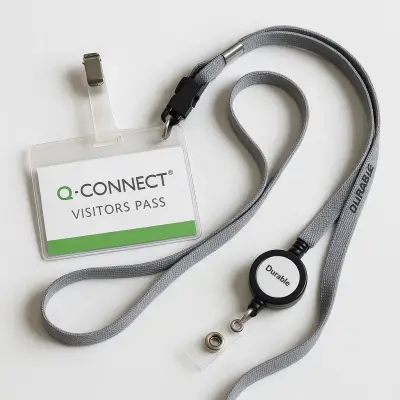What Is Warehouse Equipment and Why Does It Matter
Warehouse equipment includes the tools and machines used to store, handle, organise and move goods within a warehouse. These tools are the muscles and backbone of any warehouse operation. Without them, stock would pile up, goods would go missing, and getting products out the door would become a slow and painful task.
From unloading delivery trucks to placing goods on shelves and preparing customer orders for dispatch, warehouse equipment supports nearly every part of the process. It helps staff complete tasks more easily, keeps work safe, and enables a warehouse to run efficiently, tidily, and accurately.
At A2B Office Supplies, we understand that choosing the right equipment for your space isn’t just about saving time; it’s about protecting your inventory, reducing waste, and equipping your workers with the right tools to perform their jobs more effectively.
Let’s walk through the main types of warehouse equipment, how they work, and what they can do for your warehouse.
Material Handling Equipment for Fast and Safe Movement
Material handling equipment refers to machines and devices used to move items around inside the warehouse. This group includes large vehicles, smaller manual tools and automated systems.
Forklifts and Pallet Movers
Forklifts are one of the most recognisable types of warehouse equipment. They are used to lift and carry pallets or large, heavy items. They come in different models, such as counterbalance forklifts, narrow-aisle reach trucks, and order pickers designed for lifting staff to higher shelves.
For moving pallets across short distances, pallet jacks are perfect. If you’re looking for easy handling on the warehouse floor, you’ll find both electric and manual pallet trucks on our site. They are easy to use and save a lot of strain on people moving heavy loads by hand.
Conveyor Systems
Conveyors are ideal for constant movement. You’ll often find these belted or roller systems transporting goods across the warehouse without the need for manual lifting. They can be designed to run at floor level or reach elevated platforms, helping link areas of your warehouse with minimal human effort.
Automated Machines and Lifting Aids
Modern warehouses are starting to rely on robotic aids like AGVs and automated order pickers. These smart tools follow programmed routes or commands to safely move goods from one area to another. Cranes also serve a purpose in larger warehouses where loads are bulky or awkward in shape.
Another useful tool is the container truck, which is perfect for moving storage bins and trolleys around packed warehouse zones with ease.
Storage and Organisation with Matching Warehouse Equipment
Once goods are moved into place, the next challenge is finding the perfect spot for them. Storage equipment helps organise products clearly, safely and in a way that saves space. Picking the right gear lets you make better use of floor and vertical space, while also keeping things accessible.
Racks and Shelves
Racking systems are key to storing pallets efficiently. Our racking and shelving range includes various types like selective pallet racking, drive-in racking for tighter spaces, cantilever racking for awkward items like timber or piping, and push-back racking for high-density areas.
Shelving works better for lighter stock or smaller items. It’s often used in manual picking zones where boxes, tools or individual parts need to be taken out often.
Mezzanines and Levels
Adding steps or mezzanine levels is a great way to create new layers of storage inside your existing building. This means you can store more without building outwards.
Bins, drawer units and lockers are excellent for storing smaller bits or tools, keeping things sorted and safe. Some warehouses even use colour-coded sack holders to separate waste and materials for recycling.
How Automation Changes Warehouse Equipment Needs
Automation now shapes many warehouse plans. Technologies like AS/RS (automatic storage and retrieval systems) bring a new level of control and speed. These systems use stacker cranes to swiftly collect pallets or bins at the press of a button.
You might also see vertical lift modules or miniload systems in action. They store items in tall stacks and retrieve them automatically when needed, saving vertical space and reducing trips up and down ladders.
More automated belt systems, such as electrified conveyors or monorails, link packing stations with loading zones, slashing walking distances and manual strain. These setups often connect with management software like WMS, so every item is tracked automatically as it moves.
While automation demands a higher upfront cost, it pays off in improved accuracy, quicker turnaround and lower reliance on manual labour.
Supporting Tools to Keep Your Warehouse Running Smoothly
Beyond the main machines and racks, many other bits of warehouse equipment help things run more neatly and safely.
For example, dock levellers help line up delivery trucks with warehouse floors. This makes loading and unloading faster while lowering the risk of falls or damage. Dock seals help protect stock from rain and dirt during transfer.
Safety gear is also essential. That includes floor paint and tape to mark walkways, loading spots, or danger zones. Tools like blades and knives are kept in tight control to reduce risks during packaging or cutting jobs.
We also offer sack trucks, perfect for deliveries or stored materials that need to be moved from one place to another by hand. For working trolleys or carts, our trolley and truck accessories provide the finishing touches to kit out an efficient team.

Warehouse Equipment Selection Tips
Choosing the right warehouse equipment should depend on:
- The types of products stored
- How often do you move those products
- Weight and volume of your typical stock
- Available floor and ceiling space
- Number of staff and skill levels
Be sure your equipment scales with your storage needs and shipping volume. You might not need advanced robotics if you’re only moving a few dozen items daily. But a busy eCommerce hub might gain huge savings by automating stock intake and order fulfilment.
Switching from manual handling to powered tools like pallet trucks or conveyor belts isn’t just about making things quicker; it keeps your team safe from injuries like strains or falls.
Maintaining Warehouse Equipment for Long-Term Use
Warehouse equipment needs care like any other machine. Checking belts, tyres, motors, and safety stops regularly can help prevent bigger damage. Always train staff before they use machines they’re unfamiliar with, particularly forklifts or AGVs.
Replace worn parts in time to avoid costly breakdowns. Looking after your shelving is also key. Misaligned racks or cracked frames create dangerous pressure points that can fail when loaded heavily.
If organised properly and backed up with regular checks, your investment in quality warehouse equipment will last for years. At A2B Office Supplies, we offer sturdy gear built for daily wear and tear.
FAQs
What is the main difference between racking and shelving?
Racking is meant for storing pallets or large items using forklifts, while shelving is better for smaller individual products, usually accessed by hand.
Do I need automation in my warehouse?
That depends on your workload. Smaller operations may find manual processes good enough. If you handle hundreds or thousands of products daily, automation can help speed things up and reduce mistakes.
What is the safest way to move heavy boxes by hand?
Always use tools such as sack trucks or container trucks. These reduce manual lifting and lower the risk of injury.
How do I plan my warehouse layout?
Group items based on how often they’re used, keep heavy goods low to prevent falls, and leave wide paths for forklifts or pallet trucks. Use floor tape to mark these lanes.
Are mezzanines right for all buildings?
No. You’ll need to check the ceiling height and the weight support of your structure. Mezzanines work best in warehouses with tall ceilings and strong foundations.
Why Choosing the Right Warehouse Equipment Matters
Having the correct warehouse equipment makes a clear difference. It shapes how goods move through your warehouse, how your team works, and how quickly you can serve your customers.
From material handling equipment like forklifts and pallet jacks to neat storage using racking or drawers, the right tools reduce clutter, cut wasted time and keep people safe.
As the market shifts and workloads grow, more warehouses are leaning on automation too. Speed, accuracy and control become easier when machines handle the heavy lifting.
At A2B Office Supplies, we stock a full range of warehouse solutions, whether you’re looking for basic trolley extras or full rack systems. Explore our tools and equipment and get the right setup to run a smarter, safer warehouse.
















